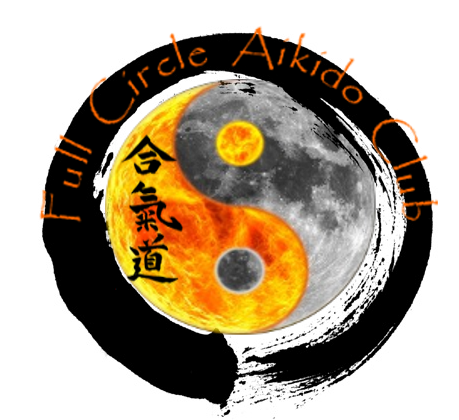Class Information
Cost:
- As we are a Club or Study group, we have no fee’s. We do accept donations to help keep the lights and a/c on and provide for materials to repair the dojo when Necessary.
- If you are financially unable to donate money, you can still donate your labor to clean the school, and pitch in when there are maintenance projects to be done.
- Membership in the ATAA is not Mandatory but is recommended it is only $25 a year.
No other hidden costs, or requirements. We are only interested in the advancement of this Martial Art.
Attire:
A traditional gi is the preferred attire.
You may start with loose fitting clean clothes with no distracting or offensive pictures or words.
Hakama is optional for Dan Grades.
All Jewelry, and metal do-dads need to be removed prior to getting on the mat.
Excessively long hair should be braided or in a ponytail secured at both ends with fabric rubber bands not hard plastic, or metal barrettes.
Overview of instruction:
Wrist exercises
Ukemi (Falling)
Basic Aikido movement and exercises for beginners.
Advanced Aikido techniques
Exploration and the application of techniques.
Exercises for balance in movement.
Discussions (from time to time), on Aikido, Budo, Bushido philosophy, proper conduct, history, disciplines, concentration, etc.
Exposure and immersion into more advanced Aikido techniques from different modes of attack such as kicking, punching, etc.
Bokken (wooden sword attack) and Jo (wooden staff attack) exercises and techniques, to promote the application of Aikido techniques and movements through the use of weapons. Tanto (knife attack) techniques, which are very similar to empty-handed techniques.
Breathing, relaxation, mind and body coordination.
Testing from time to time, for various levels of Aikido rank (ATAA members only).

Tomiki Aikido Information
Promotion standards:
| Rank | Belt Color | Total Hours | Minimum Age | Time in Previous Grade | Total time in Aikido |
| Yonkyu | Green | 40 | 14 | 3 months | 3 months |
| Sankyu | Brown | 80 | 14 | 3 months | 6 months |
| Nikyu | Brown | 120 | 14 | 3 months | 9 months |
| Ikkyu | Brown | 160 | 14 | 3 months | 1 year |
| Shodan | Black | 250 | 16 | 6 months | 1-1.5 years |
| Nidan | Black | 500 | 18 | 1 year | 2 years |
| Sandan | Black | 850 | 20 | 2 years | 4 years |
| Yondan | Black | 1100 | 22 | 2 years | 6 years |
| Godan | Black (Black/Red) | 1600 | 25 | 2 years | 8 years |
| Rokudan | Red/White | 2600 | 29 | 3 years | 11 years |
| Nanadan | Red/White | 4600 | 37 | 8 years | 19 years |
| Hachidan | Red/White | 6600 | 45 | 8 years | 27 years |
Technical Requirements for Promotion
Yonkyu: walking, falling, 8 release movements, 1-5 of Ju Nana Hon Kata
Sankyu: 6-10 of Ju Nana Hon Kata and basics of knife randori
Nikyu: 11-14 of Ju Nana Hon Kata and basics of hand randori
Ikkyu: 15-17 of Ju Nana Hon Kata, multiple attack training and rudimentary teaching skills
Shodan: must demonstrate all of the above plus vocabulary knowledge plus the first 5 movements of Owaza Ju Pon
Nidan: advanced skills in all areas, Owaza Ju Pon complete, 1-16 of San Kata
Sandan: 1-34 of San Kata, the first 14 techniques of Yon Kata, advancement of all skills especially in the areas of teaching the application of the principles of our system and of Aikido
Yondan: this is a PhD. level rank and the candidate must demonstrate extraordinary knowledge of all Aikido principles, katas and techniques, a total commitment to Aikido and teaching the Art is required
Godan: assistant professor, advancement of all skill required
Rokudan: full professor, extra-ordinary teaching and leadership skill required
Nanadan: professor emeritus, must be an outstanding contributor to the art and all of its precepts and techniques whether physical or spiritual
Hachidan: must have demonstrated continuing contributions to Aikido and exerted a continuing positive service to Aikido, its members and ideals
Kudan: red belt awarded by the committee of full professors
Judan: red belt awarded by the committee of full professors
Kata
Tegatana No Kata:
Ayumi Ashi: walking normally by alternating the feet
Tsugi Ashi: walking foot following foot
Shikko: Knee Walking
The Walk:
- Shomen Ashi: X Pattern
- Waki Ashi: side step
- Tenkan Ashi: pivot step (goblet step)
- Shomen Te Gatane: straight hand push
- Uchi Mawashi: to the inside sweep
- Soto Mawashi: to the outside sweep
- Uchi Soto Gaeshi: pet the dragon
- Uchi Mawashi Gaeshi: Same hand same foot turning outside
- Soto Mawashi Gaeshi: opposite hand/foot turning Inside & lift
- Ude Goshi Gaeshi: hip switch (foot pivot to same hand same foot)
- O Mawashi: Opposite hand/foot outside turn to #12
- Yoko O Mawashi: Big side turn – bear arms
Ju Nana HonKata (17 attacks):
Atemi waza striking techniques:
- Shomen-ate
- Aigamae-ate
- Gyakugamea-ate
- Gedan-ate
- Ushiro-ate
Hiji waza elbow techniques:
- Oshi-taoshi
- Ude-gaeshi
- Ude-hineri
- Hiki-taoshi
- Waki-gatame
Tekubi waza wrist techniques:
- Kote-hineri
- Kote-gaeshi
- Tenkai-kote-hineri
- Shiho-nage
Uke waza floating techniques:
- Mae-otoshi
- Sumi-otoshi
- Hiki-otoshi
Owaza Ju Pon (The Big 10):
- Kubi-guruma
- Kata-otoshi
- Ude-guruma
- Hiji-guruma
- Aiki-nage
- Shiho-nage
- Ushiro-ate
- Kote-gaeshi
- Ushiro-kubi-gatame
- Shizumi-otoshi

